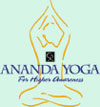Ankylosing Spondylitis
(August 2001)
ORIGINAL QUESTION:
From Beth Howard, Cheyenne, WY
Dear Ones,
Have any of you had experience teaching a student with the spinal condition Ankylosing Spondylitis? A student of mine has a friend with this condition and has asked me if yoga is appropriate. My internet research has revealed that there are yoga warm-ups and poses that are recommended as "useful exercises" to aid those living living with this. It did not mention yoga specifically. I would appreciate any information or relevant experience you might have.
Thanks & Blessings,
Beth
ANSWERS:
From Allyson Cannata
Hello,
I am a physical therapist and also teach yoga. Occasionally I have a patient referred to me with this condition.
In short, this descibes a chronic (long-term/ongoing) inflammatory process of the sacroiliac joints and lower posterior vetebral joints. The net result is a gradual destruction and then fusion of these joints. Depending on the severity of the case, the person (usually male) may become "locked" in a forward flexed position.
The goal in physical therapy is to maintain, as close as possible, the normal curvature of the spine allowing for correct posture. So the exercises are to restore or maintain lumbar extension. Exercises must be gentle and positions must not be forced.
Yoga is an excellent approach as long as this gentle approach and careful attention to the students' response is applied. Before offering ideas, remember that these are dependent on the student's current range of motion and level of strength. With that said, options could include supported Bhujangasana (cobra pose), Setu Bandhasana (bridge pose), Salabhasana (locust pose), Matsyasana (fish pose), and Backward bend (variation of Virabhadrasana I). Of course, breathing exercises with patient supine on a towel roll and Vajrasana (to help find a neutral spine) would also be nice. Certainly any warm-ups that prepare the patient for the above postures are smart to include.
From my understanding, nothing can actually prevent the process of the disease from continuing, but the degree of severity has a large range. A few patients have a very rapid development and become crippled from the disease, but most are able to continue with employment and other activities living a normal life span.
So an assessment on a case-by-case basis is the best way to determine what to include in the yoga session. Some may be able to do a full class of postures, but if the disease process accelerates quickly for that individual, the class may become a "chair" yoga class with more emphasis on pranayama and meditation. Feel free to contact me with any further questions.
In Joy, Allyson Cannata, PT, RYT 760-845-1044
From Gyandev:
I have nothing to add to Allyson's excellent response, but I can say that for a good introduction to spinal issues – both from an A&P perspective and from a Hatha Yoga perspective – check out the book, Back Care Basics, by Mary Pullig-Schatz, M.D. It's excellent, and it's available through the boutique at The Expanding Light (800-346-5350).
Blessings to all, Gyandev |







